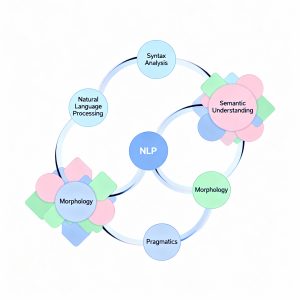In today’s cloud-native environments, operational issues can quickly escalate, requiring engineers to juggle multiple terminals, sift through vast log files, and navigate complex AWS consoles. This fragmented approach often delays problem resolution and increases the cognitive load on DevOps teams. Amazon Q Developer CLI, an AI-powered command-line assistant, transforms this experience by enabling conversational, end-to-end troubleshooting and remediation directly from the terminal.
Traditional Troubleshooting: Challenges and Limitations
Historically, diagnosing and resolving production issues has involved:
- Manually checking infrastructure configurations
- Reviewing logs across disparate AWS services
- Correlating error patterns and tracing dependencies
- Switching between various tools and interfaces
- Deep AWS expertise to interpret outputs and apply best practices
Such workflows can extend incident resolution from hours to days, stretching resources and increasing the risk of prolonged outages.
Amazon Q Developer CLI: A Conversational Approach
Amazon Q Developer CLI revolutionizes troubleshooting by combining generative AI with direct AWS integration. It empowers engineers to describe issues in natural language and receive actionable insights, automated diagnostics, and even code fixes—all within a single terminal session.
Key Capabilities:
- Natural Language Interface: Execute AWS CLI commands and interact with AWS resources using conversational prompts.
- Automated Discovery: Map out infrastructure, analyze configurations, and identify dependencies.
- Intelligent Log Analysis: Parse and correlate logs across multiple services to detect error patterns.
- Root Cause Identification: Leverage AI reasoning to pinpoint the exact source of issues.
- Guided Remediation: Suggest or implement fixes with minimal manual intervention.
- Validation: Test solutions and explain complex problems in simple terms.
How Amazon Q Developer CLI Works: Step-by-Step Example
1. Initial Problem Statement
Engineers can initiate troubleshooting by describing the issue in plain language. For example, reporting “502 Gateway Timeout errors” in a production NGINX application. Amazon Q Developer CLI immediately begins investigating the problem, referencing local code and AWS configurations.
2. Automated Infrastructure Discovery
Without explicit prompts, the CLI intelligently identifies the application’s deployment environment (e.g., ECS Fargate), enumerates clusters and services, and checks their health status. This automated mapping ensures no critical component is overlooked.
3. Intelligent Log Analysis
The CLI retrieves and analyzes logs from relevant AWS services (such as CloudWatch Logs for NGINX and backend services). It quickly surfaces error patterns—such as upstream timeouts or delayed responses—pinpointing where failures occur in the request flow.
4. Root Cause Diagnosis
By correlating logs and configuration data, Amazon Q Developer CLI identifies mismatches or misconfigurations. In the NGINX example, it detects that the backend service’s response time exceeds the NGINX proxy timeout, causing repeated gateway errors.
5. Automated Code Fixes
Uniquely, the CLI can locate the relevant infrastructure-as-code (e.g., AWS CDK scripts), update timeout settings, and prepare the system for redeployment—all from within the terminal.
6. Deployment and Validation
After implementing the fix, Amazon Q Developer CLI builds and deploys the updated stack using the appropriate AWS CLI profile. It then validates the solution by issuing test requests and confirming successful responses and system health.
7. Comprehensive Testing and Confirmation
The CLI completes the troubleshooting cycle by verifying overall system health, running endpoint checks, and ensuring that the original issue is fully resolved.
Real-World Impact and Benefits
- Speed: Automates multi-step troubleshooting, reducing resolution times from hours to minutes.
- Accuracy: Minimizes human error by following AWS best practices and leveraging contextual AI recommendations.
- Productivity: Enables engineers to focus on higher-value tasks by offloading repetitive diagnostics and remediation steps.
- Accessibility: Makes advanced troubleshooting accessible to engineers of all skill levels, even those less familiar with AWS intricacies.
Beyond Troubleshooting: Development and Operations
Amazon Q Developer CLI is not limited to incident response. It also accelerates infrastructure development, automates code reviews, and supports best practices throughout the software lifecycle. Its contextual awareness allows it to generate, modify, and document infrastructure as code, making it a versatile tool for DevOps teams.
Conclusion
Amazon Q Developer CLI marks a new era in operational troubleshooting and cloud management. By merging conversational AI with deep AWS integration, it empowers teams to resolve incidents faster, implement fixes confidently, and maintain resilient cloud environments—all from the command line. For organizations seeking to streamline operations and boost productivity, Amazon Q Developer CLI is a transformative solution.
Read more such articles from our Newsletter here.



